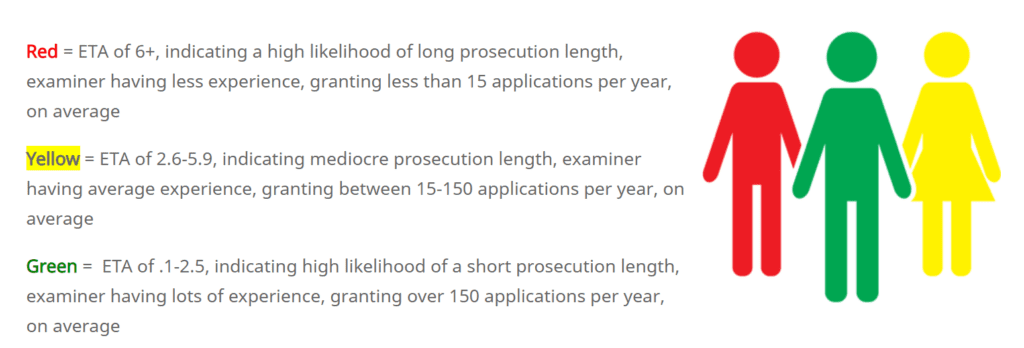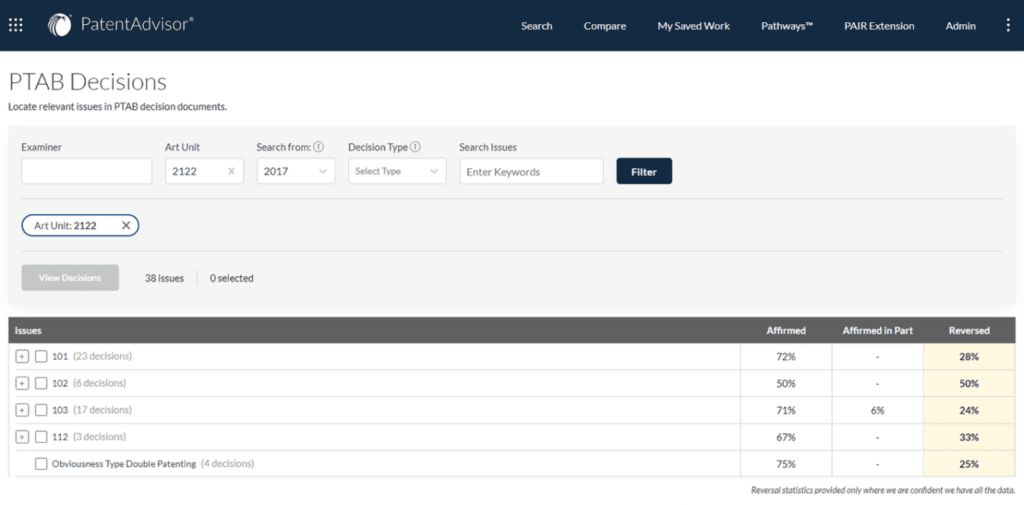Apply Qualitative Data to Your Patent Prosecution Strategy

Patent professionals have long benefited from data driven insights to guide the prosecution strategy and deliver positive outcomes, however this data focuses on events that happened during prosecution and does not give insight into qualitative aspects such as how valuable claims are, how broad they are and whether they overturned on appeal and why. In addition to standard examiner insights, patent prosecutors need more qualitative data to apply to their prosecution strategy, enabling them to take a research-based approach.
In this article, we cover why access to valuable historical information like claims details and ex parte appeals, complemented by quantitative examiner insights, is so important for patent prosecutors to produce a successful patent prosecution strategy and outcome.
Quantitative examiner insights
For a tailor-made patent prosecution strategy, patent practitioners should evaluate data driven insights along with qualitative data considerations. PatentAdvisor ETA™ is based on a proprietary algorithm that factors in the circumstances surrounding each patent examiner. The PatentAdvisor ETA patent metric is unique in that it takes into account each patent examiner’s experience level, their trends in decision–making and the actions they have recently taken on patent applications that are still pending (not just those that have been granted or abandoned). Examiners with low ETA values are preferable to patent applicants, and patent professionals who face patent examiners with high ETA values should buckle up for a lengthy and challenging journey.

Overturn an examiner’s specific rejections with carefully curated ex parte appeals data
The Patent Trial and Appeal Board (PTAB) “conducts trials, including inter partes, post-grant, and covered business method patent reviews and derivation proceedings, hears appeals from adverse examiner decisions in patent applications and reexamination proceedings, and renders decisions in interferences”. Ex parte PTAB appeals data can help patent practitioners develop a prosecution strategy to overcome a specific rejection. This appeals content provides insight into which arguments and case law the Board found persuasive in overturning a rejection.
There are over 111,000 pre-grant decisions from PTAB which is a daunting amount of content to shift through to find the winning arguments needed to successfully overturn a rejection. The LexisNexis PatentAdvisor® patent analytics platform provides access to valuable historical appeals information tagged to 217 legal issues to streamline research. Users can search by examiner name and art unit and then filter for reversals to quickly find arguments that the Board found convincing.

Enhance prosecution strategy analysis
Decisions made by the Patent Trial and Appeal Board are normally the result of a lengthy and costly process for prosecutors and clients. Yet each decision can be an important resource to support and streamline the prosecution process, making extracting, tagging, and organizing relevant patent appeal content a critical component in the workflow.
A patent prosecution strategy can benefit greatly from both quantitative and qualitative data sources. The best approach is to consider as much information as is available in the most efficient way possible. Patent professionals should take care to consider their client expectations, patent examiners, and future patents, along with PatentAdvisor™ patent data analytics for a prosecution strategy tailored to the circumstances.
Learn more about Patent Advisor PTAB decisions here.
Learn more about PatentAdvisor and Patent Advisor ETA.
Discover more on valuable qualitative content by reading How Ex Parte PTAB Decision Data Helps to Streamline Prosecution Processes.
Watch the on-demand webinar Patent Prosecution Analytics: No Longer Just a Nice to Have and read the overview here.
